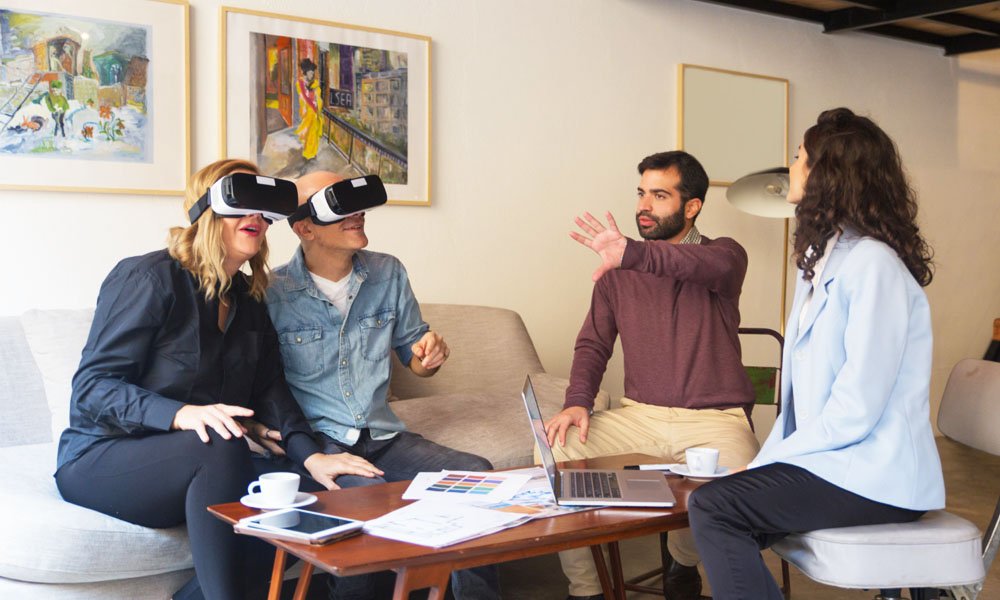Interior design is no longer just about aesthetics. In recent years, it has evolved into a harmonious blend of form, function, and futuristic technology. What once focused solely on colour palettes, textiles, and spatial arrangements now embraces smart solutions that respond to how we live, work, and relax. As homeowners and designers alike reimagine their spaces, technology has become the cornerstone of modern interiors, making rooms not only beautiful but also intelligent and adaptive.
The Shift Toward Smart Living
The rise of smart homes has fundamentally transformed how we think about interior design. Lights that dim based on mood, heating systems that learn your daily schedule, and entertainment setups that vanish into walls are no longer science fiction—they’re design essentials.
Today’s homeowners want environments that anticipate their needs. This includes intuitive lighting, energy-efficient heating and cooling, automated blinds, and immersive home cinema experiences. The ability to control all these features with a smartphone or voice assistant has brought a level of convenience that complements the desire for sleek, modern living.
Style and Substance: No Compromises
There used to be a trade-off between beautiful interiors and high-performance tech. Cables, bulky equipment, and mismatched gadgets often disrupted the flow of a well-designed room. But those days are over. Innovations in home automation and AV integration mean the most advanced systems can now be installed without interfering with the visual harmony of a space.
Hidden speakers, in-wall wiring, and flush-mounted control panels maintain clean lines and open layouts. Touchscreens blend into walls like art pieces, and lighting systems can be programmed to highlight architectural features or adjust to the time of day. This synergy of style and function is exactly what defines forward-thinking interior design.
The Personalised Smart Home Experience
What makes today’s technology-driven design so powerful is its adaptability. Every homeowner is different, and their home should reflect that. Whether it’s a family that wants to simplify their daily routine or a film enthusiast dreaming of a high-end media room, technology can be customised to meet a variety of needs.
This kind of tailored experience is central to the services offered by Design Innovation, a company that specialises in seamlessly integrating smart home systems with premium interior design. From bespoke home cinemas and immersive audio systems to full-property automation, their approach puts the client’s lifestyle at the forefront of every project.
Home Cinema: More Than Just a Screen
One of the standout areas where technology truly elevates interior design is in home entertainment. Dedicated media rooms and multi-purpose family areas are increasingly popular, but it’s not just about installing a big screen. The best home cinemas today are acoustically treated, mood-lit, and equipped with intelligent sound and picture control—delivering a truly cinematic experience in the comfort of home.
And again, the beauty lies in discretion. Projectors that retract into ceilings, motorised screens, and acoustically transparent fabrics allow the room to serve multiple functions without sacrificing design.
Smart Lighting: Setting the Tone
Lighting plays a crucial role in defining a space’s atmosphere, and it’s an area where technology offers incredible flexibility. Automated lighting systems can be set to match circadian rhythms, improve productivity, or create the perfect ambience for a dinner party. Scenes can be programmed for different activities and even synchronised with music or entertainment systems.
More importantly, these smart systems are now designed with the interior in mind. Sleek control panels, mobile apps, and even voice commands allow homeowners to adjust lighting without cluttering the space with switches and dials.
The Future of Connected Design
As our homes become smarter, they’re also becoming more sustainable. Intelligent systems help monitor energy usage, reduce waste, and extend the lifespan of appliances and infrastructure. Climate control that responds to occupancy, blinds that adjust to natural light, and water-saving features all contribute to a greener, more efficient household.
Designers are now looking beyond immediate needs and planning spaces that can evolve with new technologies. The most forward-thinking homes are designed to be upgrade-ready—able to incorporate future devices without extensive rewiring or reconfiguring.
Creating Spaces That Work for You
Ultimately, the marriage of technology and interior design is about more than gadgets—it’s about creating environments that support the way people actually live. Whether that’s integrating a whole-home audio system, automating your heating, or designing a multi-functional room that transforms at the touch of a button, smart design is responsive, efficient, and deeply personal.
For homeowners considering a renovation or new build, now is the time to embrace these possibilities. Working with experienced integrators and designers ensures that technology is not just an afterthought but an integral part of the home, designed with intention, installed with precision, and used to enhance everyday life.
Final Thoughts
We’ve reached a turning point where interior design is no longer just about what looks good—it’s about what works brilliantly, too. By embracing technology, homeowners can enjoy spaces that are not only stylish but also intuitive, adaptable, and ready for the future.
The best designs no longer ask you to choose between beauty and brains. With the right approach, you get both.

 News3 months ago
News3 months ago
 Health2 years ago
Health2 years ago
 Technology2 years ago
Technology2 years ago
 Celebrity2 years ago
Celebrity2 years ago

















